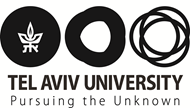In nature, light and matter are constantly interacting – photons are absorbed or emitted, they induce chemical reactions and drive the transport of charges. When such interactions occur inside a wavelength-scale region confined by a photonic nanostructure they can dramatically change, giving rise to new and exciting effects. In our research we explore artificial structures with which we may achieve complex materials with new properties and control the interaction of light and matter. We focus on several aspects of this theme, which lie at meeting point of chemistry, quantum physics optics and material science:
-
Strong interaction of molecules with light - we investigate the optical properties of organic molecules (dyes) coupled to optical devices, aiming toward understanding quantum many-body processes in such hybrid systems and controlling these interactions. Gaining such control is important for photo-chemistry, light-harvesting and organic light-emitting devices.
-
Optical properties of metallic nanoparticle-clusters - A nanometer-size gold particle has a very distinct color, completely different than the color of bulk gold. The reason is that when we shape a metal over a nanometric scale it supports localized plasmon modes that depend on details such as geometry and size. In our research we explore the assembly of such nanoparticles into well-defined clusters in order to achieve composite materials with new optical properties.


